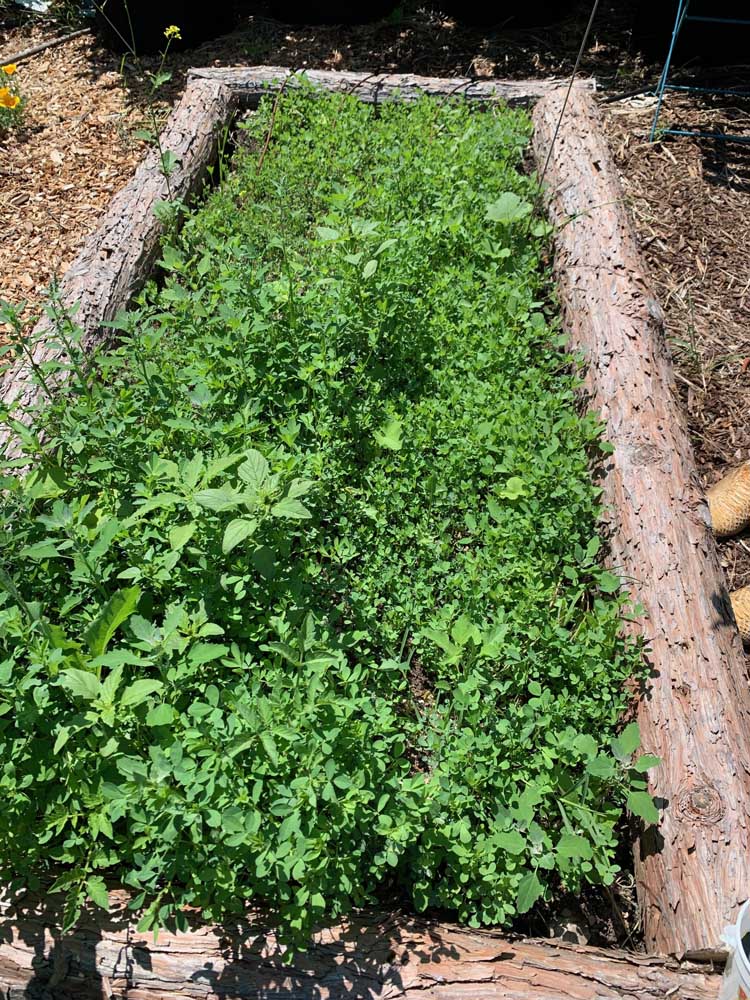GARDEN PLOTS: Mulching — An encore of the gardener’s summer performances
Published 6:00 am Wednesday, September 13, 2023

- Growing an overwintering cover crop, or living mulch, in your flower and vegetable garden has multiple benefits for the soil, plants, wildlife, the planet, and for you.
“… Birthdays for him are when he wakes
Trending
and falls into the news of weather.
“Try! Try!” clicks the beetle in his wrist,
his heart is an educated swamp,
Trending
and he is mindful of his garden,
which prepares to die.”
— “The Mulch” in Stanley Kunitz’s “The Wild Braid” (2005)
Stanley Kunitz — gardener and poet laureate — attended 100 growing seasons during his lifetime (1905-2006). At the end of every dazzling annual performance filled with rampant greenery, copious flower sex and bounteous (re)production, the autumnal equinox arrived in the last act, a quiet reminder that the dramatic action in Kunitz’s garden was ending, the yearly curtain call on nature’s long-running hit show.
Of course, gardeners don’t just sit back and watch all the drama unfold; they have an important supporting role to enhance the leading actors as the plot unfolds.
Hard-working gardens and gardeners deserve a rest. But for mindful gardeners, the “beetle in our wrists” tells us there’s still an encore performance that needs our attention: mulching.
There are two kinds of mulching activities in the fall garden. The first involves applying a thick layer of mulch around plants to insulate the soil and plant roots. If, like me, you’ve been using Ruth Stout’s method of layering several inches of organic matter on top of the soil in your flower and vegetable gardens, then you will already know the benefits of mulching. (See my column on April 5, 2023.)
During our hot, dry summer, my mulching efforts paid off by reducing the number of weeds in my garden and keeping the soil moist in between waterings. (I won’t lie, though, and say none of my plants succumbed to the heat.) In fact, an important benefit of making my mulch with yard debris is that I’m helping to mitigate global warming by reducing landfill waste that emits methane, a greenhouse gas, into the atmosphere.
I found that some insects, particularly earwigs, appreciated the protective cover of the mulch; however, for the most part they contented themselves by feeding on the decomposing organic matter, rather than on my lettuce and roses. (I won’t lie, though, and say none of my plants were eaten by earwigs and other insects.)
One of my favorite fellow supporting actors in the garden is the American red robin — certainly one of the most opportunistic birds — who soon learned to forage beneath the mulch for dinner. I derived a lot of satisfaction from our unspoken quid pro quo arrangement, although I was far less enamored with the turkeys digging through mulch like the proverbial bull in a china cabinet.
Anyway, all I need to do for fall is replenish the mulch by adding shredded leaves and grass clippings I’ve collected. During what is predicted to be a cold, dry winter, the mulch will keep the soil beneath a little warmer, thus soil organisms will stay active longer to make humus and add nutrients to the soil. (Earthworms and soil microbes will get a rest, too, as winter continues.)
In addition, the mulch will help to lessen the stress that plant roots contend with as the soil freezes and thaws throughout the winter. Just as stress makes humans more vulnerable to disease, so, too, can stress negatively impact plant roots, particularly in the top few inches of garden soil.
The second kind of mulching activity entails growing a cover crop, or living mulch, to replenish soil nutrients. Don Tipping of Siskiyou Seeds says, “Cover crops are like tucking the earth into bed.” His apt analogy reminds me that a living, breathing soil plays the real starring role in our garden’s summertime drama, yet its importance is too often underrated. Even the best soil needs support, or it won’t be great for long.
Effective living mulches for overwintering are mixtures of annual grasses (oats, cereal rye, ryegrass), legumes (clover, peas, vetch), and brassicas (mustard, turnips, radishes) that break up compacted soil. Cover crops grow best when planted before Oct. 15 to allow some growth before hard frosts occur.
Besides adding organic matter to nourish the soil, winter cover crops, also called green manures, provide support by improving soil structure and protecting the bare earth from erosion caused by wind and rain. Another big advantage of living mulches, Tipping tells us, is that they make our gardens more adaptable to climate change.
In his September blog “Cover Crops: Function and Purpose,” Tipping writes, “Cover crops create a large amount of above-ground and below-ground biomass, which helps sequester carbon from the atmosphere. They also reduce the need for fertilizer inputs. Though not a cure-all for climate change, they may be beneficial in helping us through the future.”
I think gardeners could use all the help we can get to continue gardening successfully as the planet heats up. By planting living mulches, we are helping ourselves by helping the soil — another satisfying quid pro quo arrangement — and we’re also helping local wildlife face the challenges of increasingly erratic winters by providing shelter and food for foraging.
Next summer, when global warming slaps us in the face again with extended triple-digit temperatures and wildfire smoke, we can say we’ve done something proactive in the garden to address our planet’s future. Surely that will be the most important supporting role we ever play.









